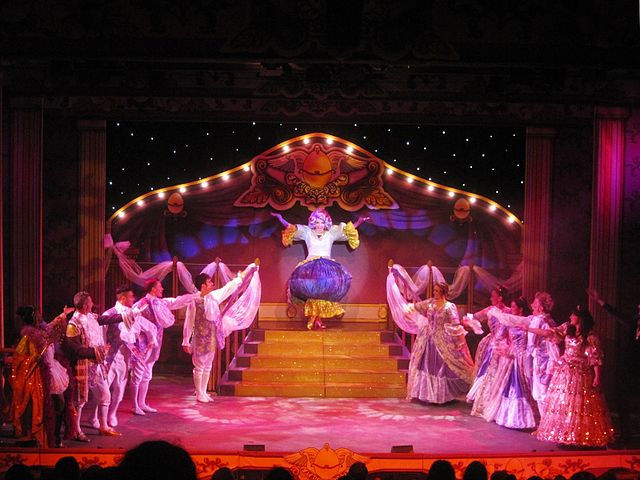 Pantomime has received a facelift in recent years, a “rags to riches” transformation. The 80s and 90s saw a gradual decline in quality, and pantomime was regarded as a cheap entertainment option with some glitter to cover the cracks. Some of regional repertories and smaller companies kept the magic alive and reinvigorated it, however audiences began to demand better and slowly pantomime began to improve.
Pantomime has received a facelift in recent years, a “rags to riches” transformation. The 80s and 90s saw a gradual decline in quality, and pantomime was regarded as a cheap entertainment option with some glitter to cover the cracks. Some of regional repertories and smaller companies kept the magic alive and reinvigorated it, however audiences began to demand better and slowly pantomime began to improve.
Pantomime is best when created with love and care, each made with a personal, relative method for the audience to connect to. Each production is particular to each audience in each town the pantomime plays in. The more personal the connection the better, so jokes and references are included that only the audience would relate to. The script ultimately pulls the strings of the pantomime together.
Before everything begins, sets, costumes and props are stored away from the previous year’s production and the work begins for the following year. The ‘big name’ is the first essential part of the pantomime, with their name being the attraction to most pantomime audiences. The star must bring a little bit extra that ensures that they can create a special kind of magic that connects with adults and children alike.
Keeping the writing fresh is important, followed by photo shoots, set building, music composition and then casting. Another key member of the team is the dame, which differs greatly between producing companies. For pantomime there must be pretence without pretence: everyone is ‘in’ on the joke but doesn’t give it away. Pantomime is a lot about illusion with no illusion: there is magic but the magic must be transparently human.
From there the rehearsals begin, set is built, sequins are sewed, and there are orchestra calls, choreography sessions, marketing and publicity, front of house dressing, all until the show begins!
Image courtesy of Wikimedia Commons.
